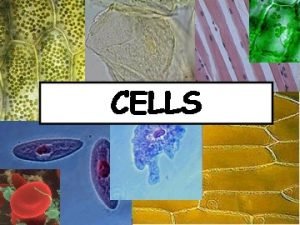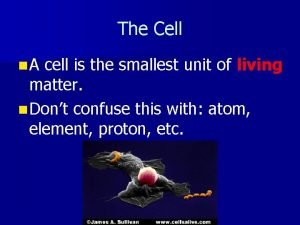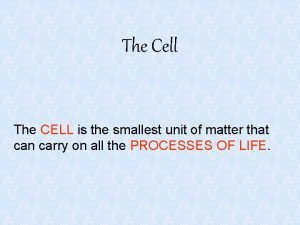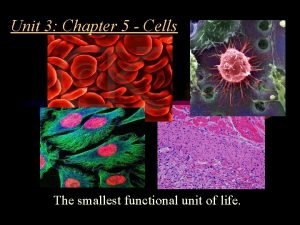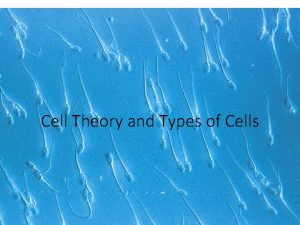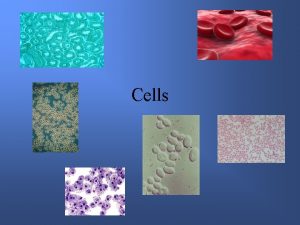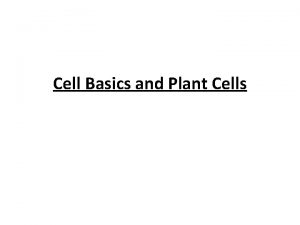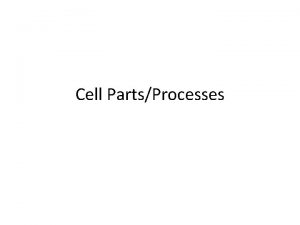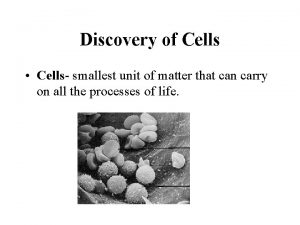CELLS What is a cell The smallest functional












- Slides: 12

CELLS

What is a cell? The smallest functional and structural unit of all living organisms Usually consists of a nucleus, cytoplasm, and a membrane.

Who discovered cells? Robert Hooke, 1665 Made a microscope and was looking at a thin slice of cork. He noticed that it was made of little boxes which he named “cells”.

Anton van Leeuwenhoek 1673 Made his own microscope and looked at cells from plants and quite a few from different animals.

The Cell Theory In 1838, Matthias Schleiden concluded that all plant parts were made of cells.

Cell Theory cont. Theodor Schwann, another scientist, mostly studied animals. In 1839, he concluded that all animal tissues were made of cells.

Cell Theory cont. Schwann later wrote the first two parts of the Cell Theory which state: 1) All organisms are made of one or more cells. 2) The cell is the basic unit of living thing. In 1858, Rudolf Virchow added the third part of the cell theory: 3) All cells come from existing cells.

How big are cells? Most cells are way too small to be seen without a microscope. A human body has 1013 cells. (10, 000, 000. ) A drop of blood has a similar number of cells as people living in New Zealand. That’s over 4 million!

Why are they so small? Cells take in food and get rid of wastes through their outer surface. As a cell gets larger, it needs more food and produces more waste. As a cell’s volume increases, so does its surface area. If the cell get’s too big, it wont be able to taken in nutrients or get rid of wastes fast enough to survive. This limits the cell’s size. This is called the surface area-to-volume ratio. Surface area-to-volume ratio=surface

What are all cells made of? All cells have the following things: Cell Membrane: a protective layer that covers the cell’s surface and acts as a barrier.

What are cells made of? Organelles: Structures that perform specific functions within the cell. Found in the cell’s cytoplasm.

What are cells made of? DNA: the genetic material that carries information needed to make new cells and new organisms. DNA is sometimes found in a cell’s nucleus, but not always.
 The smallest unit of life is the
The smallest unit of life is the Cells are the smallest unit of life
Cells are the smallest unit of life Smallest cells
Smallest cells Cells are the smallest unit of life
Cells are the smallest unit of life Smallest functional unit of life *
Smallest functional unit of life * Onodi cells
Onodi cells Proximal convoluted tubule
Proximal convoluted tubule Parafollicular
Parafollicular Haploid and diploid venn diagram
Haploid and diploid venn diagram Somatic vs germ cells
Somatic vs germ cells Red blood cells and white blood cells difference
Red blood cells and white blood cells difference Prokaryotic v eukaryotic
Prokaryotic v eukaryotic Comparing plant and animal cells venn diagram
Comparing plant and animal cells venn diagram
